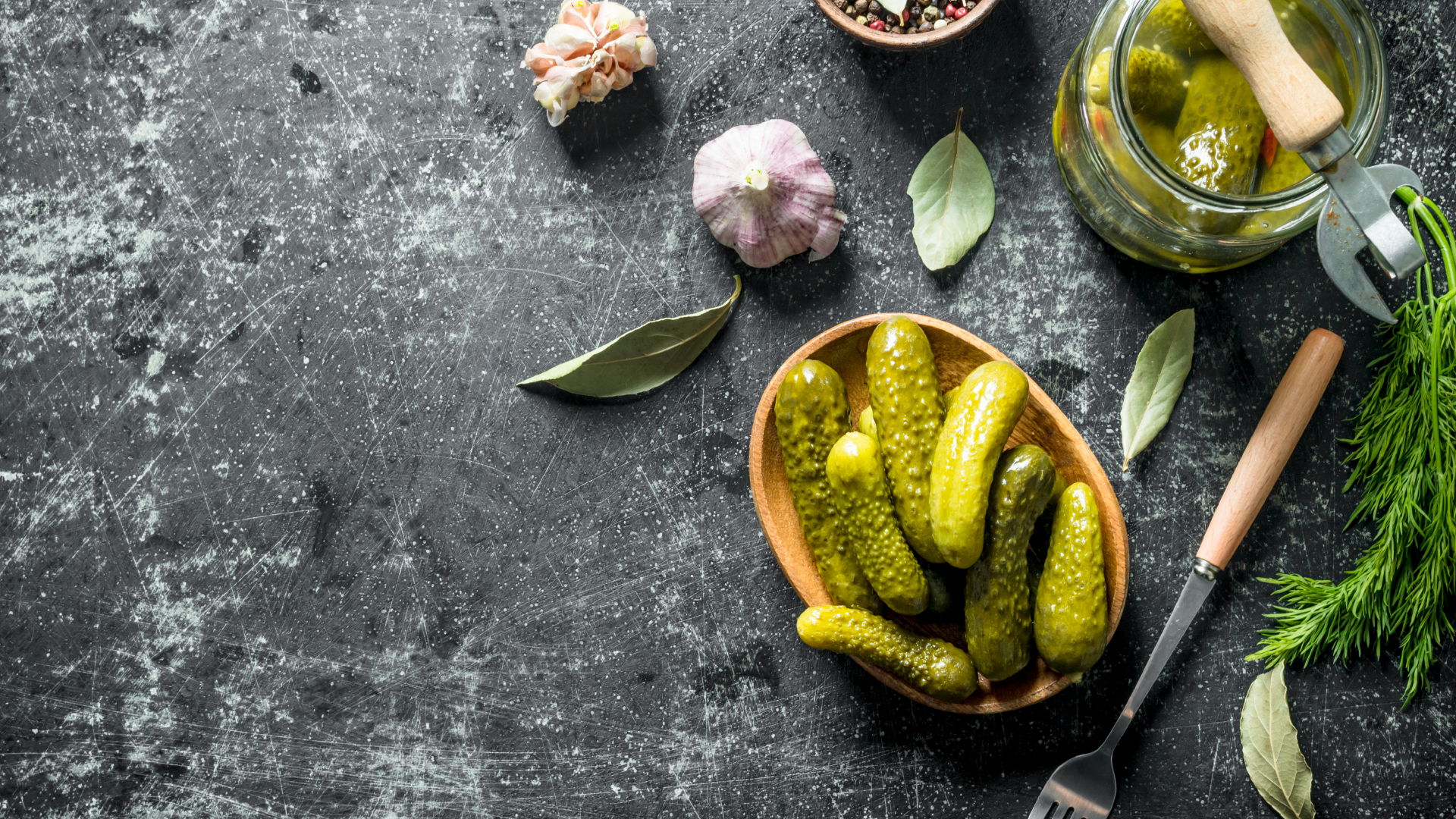Pickles are a food storage and preservation method obtained by combining vegetables and sometimes fruits with salt, water, vinegar, and spices and subjecting them to a fermentation process. This method ensures that vegetables and fruits are durable for a long time and offer a different taste than when they are fresh. Pickles can be made from various types of vegetables and fruits, such as cucumber, cabbage, carrot, pepper, eggplant, and radish.
During the fermentation process, the bacteria in the pickle break down sugars and starches, creating an acidic environment. Thanks to this acidic environment, pickles have a protective effect that prevents spoilage. Probiotics contained in pickles have positive effects on digestive health and strengthen the immune system. For this reason, pickles are considered both a delicious appetizer and a healthy food option. In this article, we will talk about how often and when pickles, a healthy food that is a part of our daily lives and has a place in our eating habits, should be consumed.
A Brief Look at the Benefits of Pickles
The benefits of pickles are quite diverse, thanks to the nutrients and probiotics they contain. First of all, pickles contribute positively to the health of the digestive system. Probiotics formed during the fermentation process help digestion function properly by supporting the balance of beneficial bacteria in the intestines. In this way, pickles play an effective role in preventing digestive problems such as constipation and gas.
Pickles are also rich in antioxidants and fiber. Antioxidants protect against oxidative stress in cells by fighting free radicals in the body and slowing down the aging process. Fiber, on the other hand, facilitates digestion by helping to regulate bowel movements and contributes to balancing cholesterol levels. In addition, pickles contain important minerals such as calcium and phosphorus. A regular intake of minerals supports bone and dental health. With all these benefits, pickles can be considered as a food option that contributes to a balanced and healthy diet.
Amount and Time of Pickle Consumption
Pickle consumption varies depending on a person’s age, gender, weight, and general health condition. If you do not have a special illness and do not use any medication, pickles do not directly harm your body. However, as a general rule, daily consumption should be between 100 and 200 grams. People with health problems, such as high blood pressure, should keep their pickle consumption at lower levels.
Pickles are generally consumed for lunch and dinner. Due to its positive effects on the digestive system, it is recommended to consume it, especially after fatty and heavy meals. Thus, pickles help prevent digestive problems such as gas and bloating that may occur after eating.
Children’s pickle consumption should be carefully regulated, especially in terms of salt and vinegar ratios. Less salty and vinegar-free pickle options may be preferred for children. Additionally, children’s pickle consumption should be lower than that of adults.
Pickles and Diet
Since pickles are a low-calorie food, they are considered a suitable option for those on a diet. However, due to the high salt content of pickles, it is important for those on a diet to pay attention to their consumption. Excessive salt consumption can make weight loss difficult and cause water retention problems.
The effects of pickle consumption on health are closely related to the amount of consumption and whether the type of pickle is natural or not. It is possible to ensure healthy pickle consumption by choosing natural and additive-free pickle varieties. Additionally, paying attention to daily consumption helps prevent health problems.
Pickle Varieties According to Your Taste
There are many types of pickles, depending on the types of vegetables and fruits used. Every country and region has its own pickle recipes and varieties. Here are some popular pickle types from Turkish and world cuisines:
- Pickled cucumber: Perhaps the most common type of pickle. Thin and long cucumbers are prepared with a mixture of salt water and vinegar. Sometimes it is flavored by adding garlic, bay leaves, and black peppercorns.
- Pickled cabbage: Pickles made from white cabbage leaves are especially popular during the winter months. Pickled cabbage can be enriched with red pepper, garlic, and spices.
- Pickled carrots: This pickle, using sliced or whole carrots, is both a colorful and delicious option.
- Pickled peppers: Made using green, red, or bell peppers, this pickle can be hot or sweet. Spicy options of pickled peppers are also very popular.
- Pickled eggplant: Pickles made with sliced or whole eggplants are preferred, especially in the summer months. Hot peppers and garlic are generally used in eggplant pickles.
- Pickled radish: Made using both red radish and white radish, this pickle is a delicious and nutritious alternative.
- Pickled red beets: Pickled red beets offer a pleasant color and sweet taste. It is sometimes flavored with apple cider vinegar and spices.
- Pickled green plums: This pickle made with green plums in spring offers a sour and refreshing taste.
- Pickled gherkins: This pickle, made from small and thin cucumbers, is especially common in European cuisines. Gherkins are frequently used in pickle sauces and sandwiches.
- Mixed pickles: This pickle type, in which different vegetables are used together, is a colorful and delicious option. It consists of a mixture of vegetables such as cucumber, carrot, pepper, eggplant, cauliflower, and cabbage.
The pickle types above are examples frequently encountered in Turkish and world cuisines. With Berrak, you can choose the pickle that best suits your taste and consume it in the appropriate amount whenever you want.


